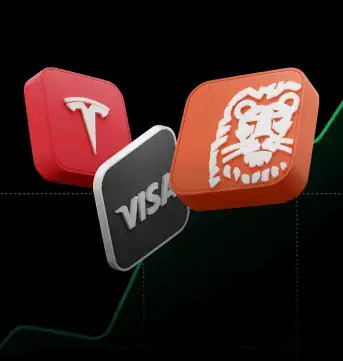The trade war initiated by Donald Trump is in full swing. The battle, which began in early February, constantly shifts its pace and direction. Although tariffs on China have already reached 20%, the situation with Mexico, Canada, and the rest of the world remains uncertain. Investors are eagerly awaiting April 2, when the United States is set to impose reciprocal tariffs and decide on the fate of trade with Mexico and Canada. This could, of course, trigger retaliatory measures against the United States, a major producer of many key agricultural commodities. From the perspective of exports to China, soybeans are crucial, while Mexico is the world's largest corn importer, mainly from the US. In the event of a breakdown in negotiations, will Mexico impose substantial tariffs, thus crippling the US farming industry? Or will the US shift its trade to other countries?
The Global Corn Market: An Overview
Corn is one of the world's most important agricultural commodities, alongside wheat, soybeans, and rice. Unlike wheat, corn and soybean production is concentrated in a few regions globally. The United States is the undisputed leader in corn production, followed by China, Brazil, and Argentina. While the war in Ukraine has highlighted the region's corn production, Ukraine ranks only seventh globally, considering the EU as a single entity.
Corn production in the 2024/2025 season has slightly decreased compared to the record-breaking 2023/2024 season, while consumption has marginally increased, leading to a price rebound observed from September 2024 to February 2025. However, US tariff policies have caused market turmoil, particularly for corn, which has experienced the most significant price increase among major grains. What are the future prospects for the corn market?
The United States is the world's largest corn producer. Source: Bloomberg Finance LP, USDA, XTB
Mexico: A Key Importer
In terms of consumption, the main players are also the largest producers. The United States is the world's leading corn consumer, followed by China and Brazil. Corn is primarily used for two key purposes: ethanol production as a biofuel and animal feed. Corn intended for direct or indirect human consumption is marginal. Consequently, corn prices largely depend on fuel prices and livestock demand.
Notably, Mexico is the world's largest corn importer, mainly from the US due to proximity. Interestingly, China is not a major global importer, although its importance has been growing since 2021. Despite the US being the largest exporter, China imports virtually no corn from the US. The war in Ukraine has also reshaped global corn trade. Before 2022, Europe imported significant amounts of US corn. Currently, EU countries rely primarily on Ukrainian supplies, highlighting US exporters' dependence on Mexico.
Mexico is the world's largest single corn importer, mainly from the US. However, in the event of retaliatory tariffs, Mexico could also import from Brazil or Argentina. Source: Bloomberg Finance LP, USDA, XTB
Improved Weather Prospects and Increased Corn Planting
Corn and soybeans are grown in similar regions, given their comparable requirements. Thus, farmers can adjust their planting plans annually. Given corn's relatively higher prices compared to soybeans, increased corn planting is expected. US farmers are projected to plant 94 million acres, an increase of nearly 4 million acres, approaching the 2023/2024 season's record levels. Moreover, harvest yields are expected to be higher due to improved weather conditions. The El Niño weather phenomenon, which brought dry weather to the US, is subsiding, and temperature and rainfall forecasts indicate favorable conditions in the US Corn Belt. In the event of a trade disruption with Mexico, US farmers may face excess inventory, significantly impacting prices. The USDA forecasts a fourth consecutive season of price declines. The planting intentions report will be released on March 31.
The absence of El Niño results in better growing conditions for many agricultural commodities globally. Historically, negative El Niño indices often led to price declines. Source: Bloomberg Finance LP, XTB
The Significance of Corn for the US
While the US is renowned for its agricultural production, its economic and trade significance is relatively moderate. US corn exports to Mexico amount to approximately $6 billion, while the trade deficit reached nearly $172 billion last year. However, public dissatisfaction is substantial. During the previous trade war, affected farmers received subsidies. Currently, with the situation unresolved, no subsidies have been mentioned. Notably, many Trump and Republican voters are Corn Belt farmers, which could significantly impact the congressional elections in less than two years.
The Future of Corn Prices
Although corn prices, at 450-460 cents per bushel, are nearly half of the historical peak around 800 cents per bushel, they are not extremely low. A significant increase in US inventories could lead to a situation similar to 2015-2020, when prices hovered around 350 cents per bushel. However, this will depend on the outcome of the trade war, weather-related production prospects, and investor sentiment, as they recently reduced long positions in corn futures. While the corn market is not critical to the overall US economy, dissatisfaction among a large social group could signal to others that Donald Trump does not prioritize their interests, potentially hindering the economic revival promised during his campaign.
The number of speculative long positions in corn futures has decreased from nearly 600,000 to 450,000. Historically, such situations have triggered prolonged market corrections, although current corn prices are not excessively high. Source: Bloomberg Finance LP, XTB
Michał Stajniak, CFA
Deputy Director of the XTB Research Department
Commodity Market Analyst
michal.stajniak@xtb.pl
US OPEN: US500 tests record highs as technology sector leads gains
Zelensky set to meet Trump on Sunday: A renewed hope for a breakthrough?
Three Markets to Watch Next Week (26.12.2025)
Chart of the day - Silver (26.12.25)
The content of this report has been created by XTB S.A., with its registered office in Warsaw, at Prosta 67, 00-838 Warsaw, Poland, (KRS number 0000217580) and supervised by Polish Supervision Authority ( No. DDM-M-4021-57-1/2005). This material is a marketing communication within the meaning of Art. 24 (3) of Directive 2014/65/EU of the European Parliament and of the Council of 15 May 2014 on markets in financial instruments and amending Directive 2002/92/EC and Directive 2011/61/EU (MiFID II). Marketing communication is not an investment recommendation or information recommending or suggesting an investment strategy within the meaning of Regulation (EU) No 596/2014 of the European Parliament and of the Council of 16 April 2014 on market abuse (market abuse regulation) and repealing Directive 2003/6/EC of the European Parliament and of the Council and Commission Directives 2003/124/EC, 2003/125/EC and 2004/72/EC and Commission Delegated Regulation (EU) 2016/958 of 9 March 2016 supplementing Regulation (EU) No 596/2014 of the European Parliament and of the Council with regard to regulatory technical standards for the technical arrangements for objective presentation of investment recommendations or other information recommending or suggesting an investment strategy and for disclosure of particular interests or indications of conflicts of interest or any other advice, including in the area of investment advisory, within the meaning of the Trading in Financial Instruments Act of 29 July 2005 (i.e. Journal of Laws 2019, item 875, as amended). The marketing communication is prepared with the highest diligence, objectivity, presents the facts known to the author on the date of preparation and is devoid of any evaluation elements. The marketing communication is prepared without considering the client’s needs, his individual financial situation and does not present any investment strategy in any way. The marketing communication does not constitute an offer of sale, offering, subscription, invitation to purchase, advertisement or promotion of any financial instruments. XTB S.A. is not liable for any client’s actions or omissions, in particular for the acquisition or disposal of financial instruments, undertaken on the basis of the information contained in this marketing communication. In the event that the marketing communication contains any information about any results regarding the financial instruments indicated therein, these do not constitute any guarantee or forecast regarding the future results.


